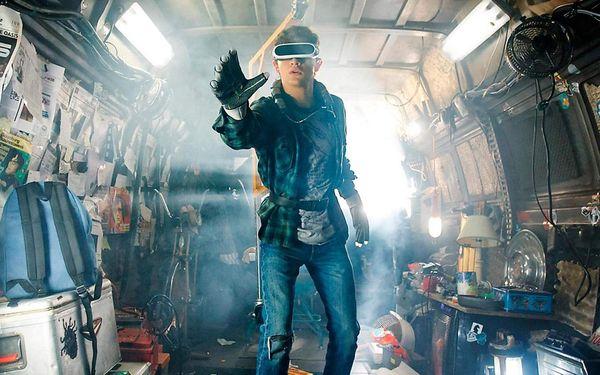I missed the first minutes of “Ready Player One” because I was in the theater lobby, speed-reading the last few pages of Ernest Cline’s novel of the same name. Turns out, I needn’t have bothered: it seems that whoever wrote the script for the movie decided to only skim their copy. Many of the readers of the 2011 novel may dislike the movie since it bears so little resemblance to the book. However, the film’s lack of adherence to the original storyline is both a strength and a weakness.
The film centers around Wade Watts (Tye Sheridan), a teenager living in the year 2045. At this point, people escape the drudge of daily life by logging into the OASIS, a virtual reality platform where almost anything is possible. Five years prior to the events on screen, James Halliday (the main creator of the OASIS) died and revealed that he hid clues to an ‘Easter egg’ within the OASIS. The person who finds the egg gets Halliday’s fortune and ownership of the OASIS. Everyone, including the greedy capitalist organization known as IOI, wants the Easter egg. In the five years since Halliday’s death, no one has found any of the clues — until one day, Wade does.
It’s a compelling narrative, but roughly three-quarters of the way through the movie, my sister asked me, “What is even happening?” Despite having just finished the book, I couldn’t tell her. This is because, even with a runtime of two hours and 20 minutes, “Ready Player One” did not spend enough time developing any of its many fascinating storylines. Whereas the book simply focuses on Wade’s quest to find the Easter egg, the film tries to straddle the line between the quest for Halliday’s egg and the fight against IOI while also trying to squeeze in a completely unbelievable romance.
The love connection between Wade and Art3mis, a fellow gamer played by Olivia Cooke, was vapid and forced. The romance dominated the narrative, and it really brought down the whole film. This connection was better in the book because it was more developed and genuine and played a lesser role.
Another major deviation from the novel was the development of the secondary characters. There was more emphasis on the idea that Wade had a team behind him, unlike in the novel, where he largely operates alone. This was a definite improvement for the film’s narrative. However, this good decision was wasted. The film did not handle this diverse cast the way it should have, and these characters were barely included.
However, the film did partially fix some of the problems in Cline’s novel, including how race is addressed. In the book, it is explicitly clear that people in the OASIS can race–switch if they want to. Needless to say, there are numerous problems with this idea. The movie side-steps this issue by largely removing race from the OASIS. Instead, many OASIS avatars are simply inhuman. Another noticeable and beneficial change that the movie makes is the removal of the book’s transphobia and offensive language.
I didn’t hate this movie, but I’m not sure that I liked it, either. It was funny, and it definitely solved a lot of the book’s weaknesses, but it didn’t have the mystery or the nail-biting, fast-paced storyline I loved in the written material. All in all, this movie was less of an oasis and more of a mirage.





